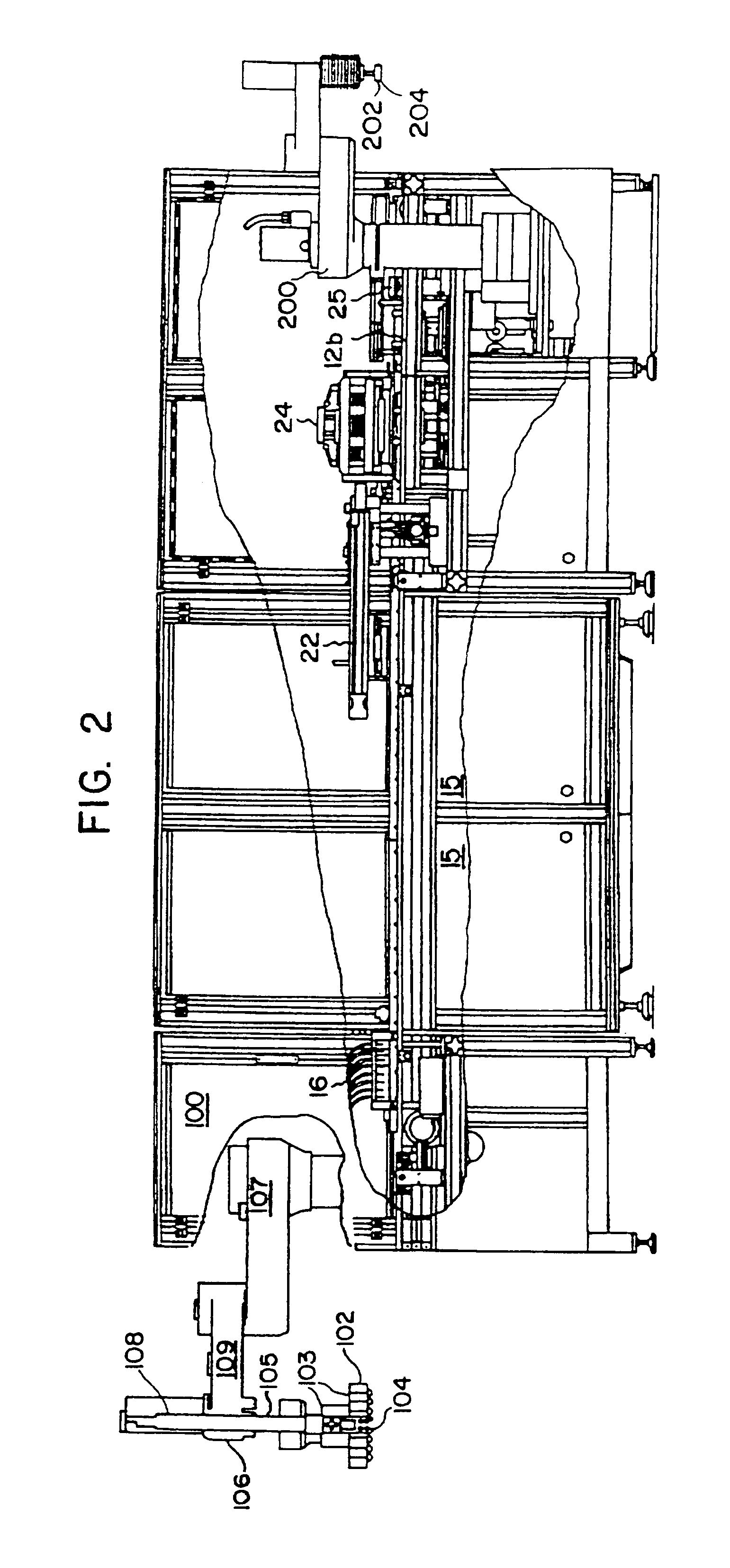Automated apparatus and method for preparing contact lenses for inspection and packaging
a technology of automatic apparatus and contact lens, which is applied in the field of manufacturing ophthalmic lenses, can solve the problems of high production rate of contact lens handling and high availability of fully automated equipment, and achieve the effect of reducing the formation of air bubbles
- Summary
- Abstract
- Description
- Claims
- Application Information
AI Technical Summary
Benefits of technology
Problems solved by technology
Method used
Image
Examples
Embodiment Construction
The present invention was designed for and is particularly adapted for use in the post hydration processing section of an automated contact lens production facility. Contact lenses molded in an automated production line, such as that described in co-pending application U.S. Ser. No. 08 / 258,654 entitled "Consolidated Contact Lens Molding"; hydrated in a hydration system as described in U.S. Ser. No. 08 / 258,556, now U.S. Pat. No. 5,476,111 entitled "Automated Method and Apparatus for Hydrating Soft Contact Lenses"; and automatically inspected as described in U.S. Ser. No. 07 / 993,756, now U.S. Ser. No. 08 / 598,068 entitled "Lens Inspection Method and Apparatus" are particularly benefited by the present invention.
Post Hydration Processing
The present invention envisions a multi-purpose disposable lens package carrier which transports a contact lens during inspection thereof, and serves as a portion of the final packaging after inspection.
A suitable package carrier 20 is illustrated in FIG...
PUM
| Property | Measurement | Unit |
|---|---|---|
| pressure | aaaaa | aaaaa |
| diameter | aaaaa | aaaaa |
| temperature | aaaaa | aaaaa |
Abstract
Description
Claims
Application Information
 Login to View More
Login to View More - R&D
- Intellectual Property
- Life Sciences
- Materials
- Tech Scout
- Unparalleled Data Quality
- Higher Quality Content
- 60% Fewer Hallucinations
Browse by: Latest US Patents, China's latest patents, Technical Efficacy Thesaurus, Application Domain, Technology Topic, Popular Technical Reports.
© 2025 PatSnap. All rights reserved.Legal|Privacy policy|Modern Slavery Act Transparency Statement|Sitemap|About US| Contact US: help@patsnap.com



